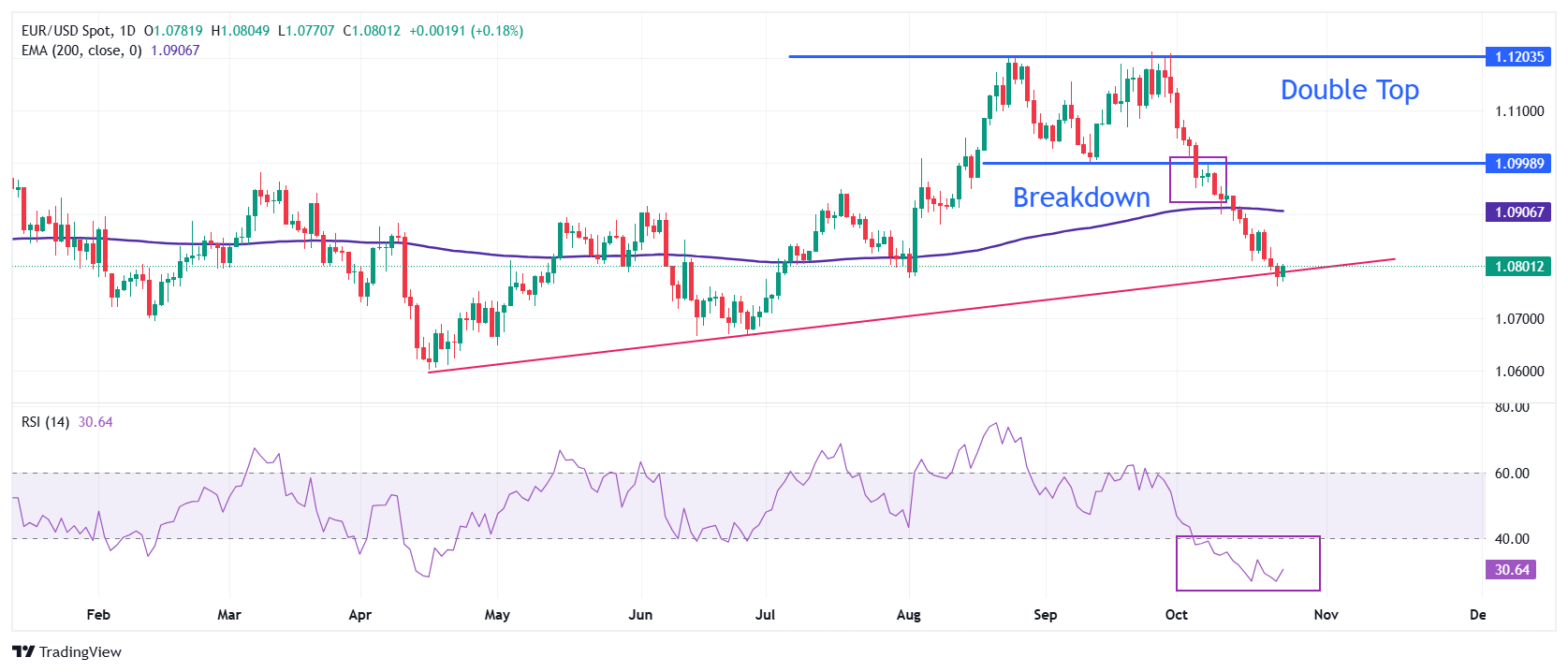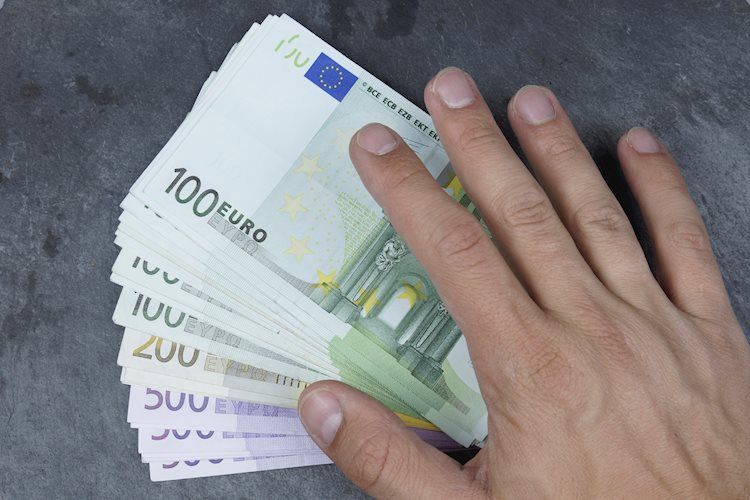- EUR/USD maintains support around 1.0760, although the short-term outlook remains subdued amid weak business activity in the euro area.
- Traders are looking for new clues about the size of the ECB's expected rate cut in December.
- EUR/USD also benefited from a slight correction in the USD.
EUR/USD added some gains in North American trading on Thursday at the expense of the US dollar (USD). The US dollar index (DXY), which measures the value of the US dollar against six major currencies, has adjusted slightly to around 104.20 after hitting a 12-week high around 104.50 on Wednesday.
However, the near-term outlook for the US dollar remains solid as investors expect the Federal Reserve to follow a more moderate rate-cutting approach. Wednesday's Fed Beige Book showed overall business activity was little changed through early October, with employment increasing slightly as inflationary pressures rose modestly.
Uncertainty surrounding the US presidential election on November 5 has also kept the dollar strong. Market participants are concerned that if President Trump wins the election, tariffs will increase, which will have a significant impact on the United States' closed trading partners.
On the economic front, the US S&P Global PMI for October showed that overall business activity expanded at a faster pace, from 54.0 in September to 54.3. The increase in business activity was driven by surprising, better-than-expected growth in services PMI. Manufacturing production fell for the fourth consecutive month. However, the pace was slower than expected.
Meanwhile, the number of new unemployment insurance claims for the week ending October 18 was 227,000, lower than expectations and the previously announced 242,000.
Daily Digest Market Trends: EUR/USD Rise, But Overall Outlook Remains Uncertain
- In North American trading on Thursday, EUR/USD is seeing renewed buying interest near a three-month low of 1.0760. Major currency pairs rose despite Hamburg Commercial Bank's (HCOB) preliminary Purchasing Managers' Index (PMI) showing that economic activity in the euro area continued to contract in October. The PMI rose to 49.7 from 49.6 in September, below the 50 mark that separates expansion from contraction, on the back of a continued decline in manufacturing activity and a modest increase in service sector production.
- “The euro area is stuck in a bit of a rut, with the economy contracting slightly for the second month in a row. Manufacturing remains weak, largely offset by a slight rise in the services sector. It is noteworthy that the situation in France has worsened and the decline in Germany has eased slightly.At present, it is not clear whether we will see further deterioration or improvement in the near future.'' , said Dr. Cyrus de la Rubia.
- The HCOB PMI report also points to weak business confidence, weak orders from domestic and international markets, moderate increases in input prices, and a decline in the workforce, which could lead to more stimulus measures by the government, prompting expectations for further interest rate cuts. This suggests the need for European Central Bank (ECB).
- The ECB has already cut its deposit facility rate by 75 basis points (bp) to 3.25% this year, and traders expect the central bank to cut it again in December. Meanwhile, the option of a larger-than-usual rate cut has been floated, and market participants are uncertain about the expected size of the cut.
- Mario Centeno, president of Portugal's central bank and member of the ECB's policy committee, said on Wednesday that the option of cutting interest rates by 50 basis points in December was on the table. Centeno warned that downside risks to growth were building.
Technical analysis: EUR/USD remains supported near 1.0750

EUR/USD finds temporary support near 1.0760 during European trading hours. However, the outlook for major currency pairs remains gloomy as they remain below the 200-day exponential moving average (EMA), which hovers around 1.0900.
The downside move in the common currency pair began after the double top formation broke on the daily time frame around the September 11 low of 1.1000, resulting in a bearish reversal.
The 14-day Relative Strength Index (RSI) indicator is below 30.00, indicating strong bearish momentum. However, as the market turns into an oversold situation, recovery measures remain.
On the downside, if the major breaks below the upward trend line at 1.0750 plotted from the October 3rd low around 1.0450, it could weaken further towards round-level support at 1.0700. On the other hand, the 200-day EMA near 1.0900 and the psychological number at 1.1000 will be the key resistance for this pair.
economic indicators
S&P Global Composite PMI
Released monthly, the S&P Global Purchasing Managers' Index (PMI) is a leading indicator of U.S. private business activity in the manufacturing and services sectors. Data comes from a survey of senior managers. Each response is weighted according to the size of the company and the contribution of its subsector to total manufacturing or services output. Survey responses reflect changes, if any, in the current month compared to the previous month and can predict trends in official data series such as gross domestic product (GDP), industrial production, employment, and inflation. Masu. The index fluctuates between 0 and 100, with a level of 50.0 indicating no change from the previous month. A reading above 50 indicates general expansion in the private economy, which is a bullish sign for the US dollar (USD). On the other hand, a reading below 50 indicates a general decline in economic activity, which is considered bearish for the US dollar.
read more.
Final release: Thursday, October 24, 2024 13:45 (Prell)
frequency: monthly
Actual: 54.3
consensus: –
Previous: 54
sauce: S&P Global

